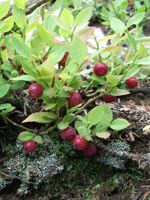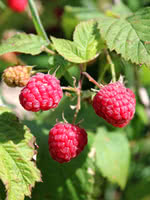Mon-Fri 9am - 5pm Mountain time
Double Delight Raspberry vs Grouseberry
Vaccinium scoparium
Rubus x Double Delight
CUSTOM GROW
NOT AVAILABLE THIS SEASON - MIGHT RETURN
Grouseberry is a native, low-growing deciduous shrub known for its edible red berries. In early summer, it produces small, urn-shaped flowers ranging from white to pink that attract bees and other pollinators. The berries provide an important food source for many types of wildlife, including game birds such as grouse, which gives the plant its common name. People can also enjoy the berries fresh or in baked goods, though they can be difficult to harvest in large quantities.
Spreading by rhizomes, Grouseberry forms dense, broom-like mats that help stabilize soil and prevent erosion, while also providing cover for ground-nesting wildlife. It is commonly found beneath conifers in open forests, subalpine meadows, and occasionally on rocky slopes in mountainous regions. It is well-suited for naturalization, ecological restoration, and soil stabilization projects.
Double Delight raspberries have an excellent sweet-sour flavor. They freeze well and are suitable for use in jams, juices, and pies.
The Double Delight Raspberry is a primocane-fruiting variety, meaning that it produces fruit on first years' growth. Prune stalks down each winter or early spring to get higher fruit yields and easier harvesting.

